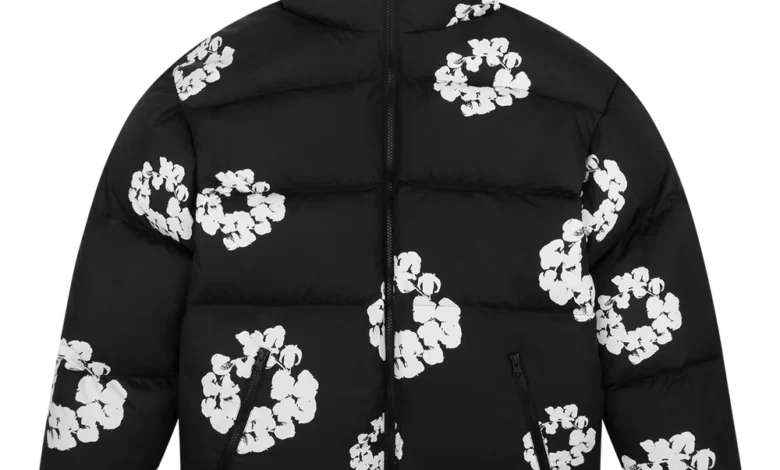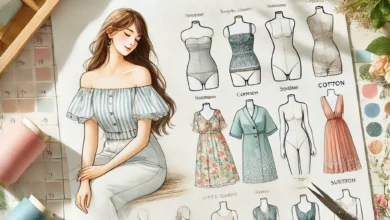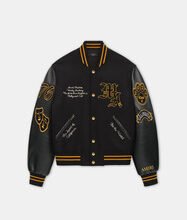
Denim Tears, founded by designer Tremaine Emory, is a streetwear brand that has redefined the way fashion intersects with cultural storytelling, particularly focusing on African American history, race, and identity. The brand has garnered attention not only for its distinctive designs but also for its unique ability to address complex social issues while creating stylish, highly wearable pieces. Denim Tears is a symbol of the new wave of fashion that isn’t afraid to speak on social issues, embracing deep narratives of Black culture and resilience.
This article will explore the journey of Denim Tears from its inception to its present-day success, the brand’s design philosophy, and its cultural significance in both the fashion world and beyond.
The Birth of Denim Tears
Denim Tears is the brainchild of Tremaine Emory, a highly regarded figure in the fashion industry who has worked with some of the most iconic brands in streetwear and luxury fashion. Emory’s career spans multiple creative industries, including music, fashion, and visual arts, which gave him the perfect foundation for creating a brand that blends style with storytelling. Before launching Denim Tears, Emory worked as a designer and creative consultant for influential brands such as Supreme and had a hand in collaborations with major players like Nike.
Emory’s vision for Denim Tears was rooted in the desire to combine streetwear aesthetics with a deeper cultural commentary, particularly about the Black experience in America. He sought to create a brand that wasn’t just about selling clothes but about providing a platform to tell important stories about race, heritage, and history. The name “Denim Tears” itself represents the emotional and cultural weight of denim—a fabric that has been intimately linked with American identity, labor, and history. Through his designs, Emory transformed denim, a symbol of hard work and resilience, into a vehicle for cultural expression.
The brand quickly gained a following, thanks to its powerful aesthetic, rich storytelling, and its message of empowerment. Denim Tears is not merely a fashion label; it is a cultural statement that resonates with a wide audience, from fashion enthusiasts to those interested in deeper issues of race and identity.
Denim Tears’ Design Aesthetic and Philosophy
Denim Tears’ design aesthetic is a unique blend of high fashion and streetwear. The brand is characterized by its use of denim, one of the most classic and durable fabrics, often associated with American workwear. However, Emory’s interpretation of denim goes beyond utility; he imbues it with cultural and emotional weight. The denim used in Denim Tears’ pieces is not just a textile; it’s a symbol of labor, history, and endurance, particularly within the context of African American experiences.
One of the most striking elements of Denim Tears’ designs is its use of powerful imagery that speaks directly to the Black experience in America. For example, one of the brand’s most famous collections features the Confederate flag, reimagined using denim. Emory takes a symbol historically associated with the oppression of Black Americans and transforms it into a work of art that reclaims the narrative. This bold move sparked significant conversation in the fashion world and beyond, as it raises critical questions about race, identity, and the role of fashion in addressing these topics.
Denim Tears’ pieces are also notable for their subtle yet impactful graphics, often referencing historical moments in Black history. For example, Emory has used references to “Strange Fruit,” a protest song by Billie Holiday about the lynchings of Black men, as a symbol of resistance and a way to reflect the painful past while asserting a forward-looking narrative of Black empowerment. Denim Tears’ designs force the viewer to confront the uncomfortable truths of history, transforming these painful events into a symbol of resilience, strength, and identity.
The brand’s design process is deeply personal and reflective of Emory’s own experiences as a Black man in America. He uses fashion as a way to engage with and respond to the world around him. The clothing he designs is an outlet for him to process and communicate feelings about race, politics, and culture, all while maintaining a commitment to the high standards of craftsmanship and quality expected from luxury and streetwear brands alike.
Cultural Significance and Storytelling
At the core of Denim Tears’ appeal is its ability to use fashion as a storytelling medium. Emory’s designs serve as a means to communicate the struggles, triumphs, and everyday experiences of Black Americans. Denim Tears’ success is not solely due to the aesthetic appeal of its clothing but also because it taps into the cultural moment, addressing issues that are deeply relevant to today’s social and political climate.
One of Denim Tears’ most notable contributions to cultural conversations is its ability to tackle uncomfortable truths through design. Fashion has always been a form of self-expression, but Denim Tears elevates it to a level of cultural commentary that challenges its audience to think critically about the world around them. By focusing on Black history, identity, and experiences of racial oppression, the brand ensures that its designs are not only stylish but also deeply meaningful.
Emory’s work reflects his understanding of fashion as a tool for change. By addressing historical traumas like slavery, segregation, and systemic racism through his clothing, he opens up a conversation about the power of cultural memory. Denim Tears does not shy away from these difficult subjects but instead embraces them, offering a platform for dialogue while simultaneously showcasing fashion that speaks to a wide range of audiences.
Moreover, Denim Tears is at the forefront of a growing movement within fashion that seeks to address issues of diversity, equity, and inclusion. The brand’s approach to using fashion as a tool for activism sets it apart from other labels, allowing it to appeal to consumers who are not just interested in aesthetics but who also want to align their fashion choices with their values.
Collaborations and Expanding Reach
Since its launch, Denim Tears has garnered attention from fashion lovers and industry insiders alike, and its rise to prominence can be attributed in part to its high-profile collaborations. One of the most impactful collaborations was with Nike, which helped bring the brand’s message to a global audience. The collaboration featured pieces that combined Emory’s signature designs with Nike’s athletic wear, allowing Denim Tears to cross into the luxury streetwear market and reach new audiences who may not have otherwise been exposed to the brand’s message.
In addition to Nike, Denim Tears has worked with Louis Vuitton, another collaboration that further cemented the brand’s status in the fashion world. Louis Vuitton, a symbol of luxury, paired with Denim Tears, a brand rooted in streetwear and cultural storytelling, created a unique blend of high fashion and socially conscious design. This partnership allowed Emory to expand his reach within the fashion industry while maintaining the core principles of his brand.
Denim Tears’ collaborations have not only increased its visibility but have also provided a platform to share Emory’s vision with the world. Through these partnerships, the brand has been able to expand its reach beyond the streetwear scene, earning recognition from both mainstream fashion and cultural institutions.
The Future of Denim Tears
The future of Denim Tears seems bright, as it continues to evolve as both a fashion label and a cultural force. With its focus on race, identity, and history, Denim Tears has become a powerful tool for social change, using fashion as a means to start conversations, spark awareness, and educate audiences. The brand’s ability to merge style with substance has set it apart from other streetwear labels, ensuring its place in the cultural zeitgeist.
Tremaine Emory’s vision for Denim Tears has created a brand that is not only about clothing but about providing a voice for marginalized communities and addressing issues of racial injustice. As Denim Tears continues to grow, it is likely to become a cornerstone of fashion activism, inspiring future designers and artists to use their platform to engage with important social and cultural issues.
In conclusion, Denim Tears represents more than just a clothing brand. It is a movement, a statement, and a means of cultural expression that blends history, identity, and fashion in a powerful way. Through its unique designs, collaborations, and cultural storytelling, Denim Tears has become one of the most important fashion brands of its generation. It continues to challenge the boundaries of fashion while addressing crucial social and political issues, ensuring its legacy as both a brand and a symbol of resistance and empowerment.


